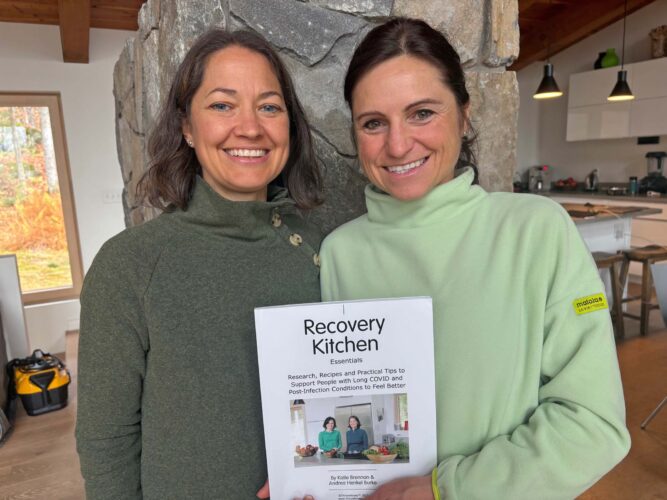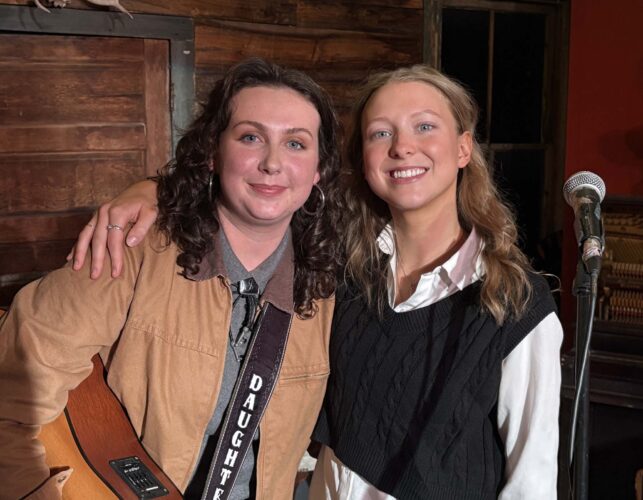MARTHA SEZ: ‘Advice on every aspect of daily life goes far beyond cooking’
In this column I have often borrowed from my great-grandmother’s guide, “The Successful Housekeeper,” published in Detroit, Michigan, in 1886. I suspect the chapters I chose — elaborate instructions for hostessing a garden party or preparing for a camping expedition, accompanied by servants — present a lopsided, even downright false, view of 19th century middle-class daily life.
The lives of small-town women like my great grandmother, Nellie Richardson Clizbe, were not all tutti frutti in the moonlight. It seems only fair to balance the amusingly frivolous descriptions of a garden party or proper lady’s wilderness attire with down-to-earth instruction taken from other chapters of Nellie’s clearly much-used book.
Numerous pieces of yellowed paper are stuck between its pages. Some are recipes clipped from the newspaper, with tantalizingly abbreviated scraps of advertisements or news stories on the other side, like this partial headline: “Domestic Service Unpopular … Because … Girls So Often … sulted.”
Nellie jotted down notes and recipes in pencil on whatever paper was available. I decipher her hurried handwriting, abbreviations, misspellings and unorthodox measurement (butter the size of a walnut or a hickory nut); I look up unfamiliar words and terms, like whiting (calcium Carbonate) for polishing silver, slaked lime (calcium hydroxide) and unslaked lime (calcium oxide). I also suspect that certain directions and ingredients are left out of recipes. (A recipe for suet pudding has no mention of suet in its list of ingredients.) She didn’t bother to write everything down, apparently taking it for granted that she, or any other reader, would know. She couldn’t have anticipated me.
Even though I grew up just a mile down the road from Nellie’s home, much of the information in her trusty guide seems utterly foreign to me.
The book assigns shockingly long cooking times to meat, fish and fowl as well as vegetables. For example: “String beans, boiled, one to two hours. Spinach, one to two hours. Tomatoes, fresh, one hour. Beets, one to five hours.”
The housekeeper is advised to ask her fishmonger for four codfish heads, to be cut into six pieces each and placed in the baking dish as supports for stuffed fish. “Garnish with fried oysters if convenient,” the author suggests.
Varieties of pickle and tomato sauce recipes abound, both in Nellie’s hand and in print. From the bread recipes, I gather that women had to culture their own yeast. There are instructions for buying, butchering, preparing, carving and preserving poultry, meats and wild game, including pigeons, and seafood.
Advice on every aspect of daily life goes far beyond cooking; the housekeeper was required to know how to do just about everything. The chapter on furniture explains not only how to clean it, but even “how to make an ottoman.”
Another chapter tells how to destroy bed bugs, moths and other pests, with chemicals ranging from alum to copperas (iron sulfate), cobalt and quicksilver.
“Arsenic, spread on bread and butter, and placed round rat and mouse holes, will soon put a stop to their ravages,” the author wrote, warning “Great care is necessary in using the above poisons, where there are any children, as they are apt to eat anything that comes in their way, and these poisons will prove as fatal to them as to the vermin (excepting the pepper).”
More sound advice: “Dishes should always be rinsed in clear, hot water after having been washed in soap suds. Nothing is more unpleasant at the table than to notice a certain stickiness that the soap is likely to leave. It is necessary also from a sanitary point of view; the caustic alkali is corrosive and unwholesome, and the grease is often impure.” (As a soapmaker, I know this refers to the lye and animal fat used as soap ingredients.) “Do not set apart one day on which to clean your silver or scour your tinware; there is danger of it not being done at all.”
Laundry is boiled, and sugar of lead (lead acetate) used to make fabrics colorfast.
Black a stove, remove stains, dye fabrics, line stair carpets, make soap and salve, preserve eggs in a barrel for winter use, prepare cough mixture with paregoric, cure the opium habit, remove warts, prevent hydrophobia (rabies), treat victims of cholera and smallpox and resuscitate “the supposed drowned,” as well as “restore from stroke of lightning.”
Successful housekeeping entailed a lot of hard work. No wonder the chapters are interspersed with such fanciful subjects as garden parties, stylish camping attire, raising canaries and folding napkins.
Have a good week.
(Martha Allen, of Keene Valley, has been writing for the News since 1996.)



